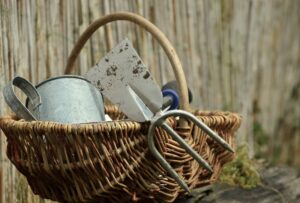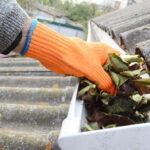Q&A: Winter gardening tasks
Thanks to the University of Maryland/Maryland Grows this informative article on winter gardening tasks.
Q: Is there any outdoor garden task this time of year that I may be forgetting to do? I’ve foregone a fall clean-up for the benefit of overwintering wildlife, and the lawn and veggie garden are “asleep” for the season.
A: There are a few things that are good to accomplish during the dormant season. Yard tools like pruners, loppers, shovels, spades, and mower blades are best stored clean, sharpened, and oiled. There may be local businesses that offer sharpening services. You can also do it yourself with a metal file or sharpening stone or rod.

Sharpen those blades
Ideally, sharpen mower blades annually so the turf doesn’t have the added stress of ragged, torn leaf blades which can be more vulnerable to infection. A steel wool scrubber or a wad of sandpaper can take off early stages of rust and caked-on sap before you focus on the blades of pruning tools and shovels. Good-quality hand pruners can usually be disassembled for easier maintenance. Lightly wiping with oil afterwards helps lubricate the metal and resist rust. Linseed oil (or vegetable oil in a pinch) can be rubbed into wooden tool handles to protect them from aging.
Pesticide containers
Check on the location of pesticide containers and protect them from extreme temperatures (including freezing). Always store them away from human and animal food and well-secured from children and pets. Products you rarely use should be dated (if you recall when you bought or opened them) since they may only have a useful shelf life of a couple of years. Old pesticides can be disposed of by looking for household hazardous waste collection sites near you.
Give them wiggle-room
If you have staked any new plantings, check their ties to make sure the plants still have wiggle-room and bark isn’t being abraded. Stakes that have been in place for six to twelve months can be removed; they’ve either done their job by now or weren’t working in the first place. (Staking is actually not often needed. At the very least it’s key to let a staked plant’s trunk sway in the breeze so stabilizing root growth and trunk thickening are stimulated.)
ID tags
Similarly, if you left ID tags tied to any plants, remove them and any other plastic or elastic nursery tags. They might damage the stems. Otherwise, any material that gets embedded in expanding growth will be impossible to remove. This could cause branch decline in the future if it interferes with sap flow. Alternatively, tags may disintegrate over time and fall off, which means you’ll have lost your plant name. Tags will be easier to spot now on deciduous plants. Keep a record of the plant ID another way – a garden diagram or journal, or written on a stake at the plant’s base – as variety-specific features might impact care advice or future troubleshooting.
Pot risers
Lastly, if you’re overwintering hardy plants in containers, consider using “pot feet” or “pot risers” to raise the pot’s base off decking or pavement by an inch or two. This lets excess moisture clear the drainage holes. It won’t freeze into an ice dam, which would risk flooding roots. Any sturdy material where you can find several pieces the same height would suffice, but you could also purchase them in an array of materials, often in packs of three or four “feet” per pot.
By Miri Talabac, Horticulturist, University of Maryland Extension Home & Garden Information Center. Miri writes the Garden Q&A for The Baltimore Sun. Read additional articles by Miri.
Oh by the way, I’m never too busy for any of your referrals! If you are looking to buy or sell your home (with or without a garden), contact Gigi today.








Recent Comments